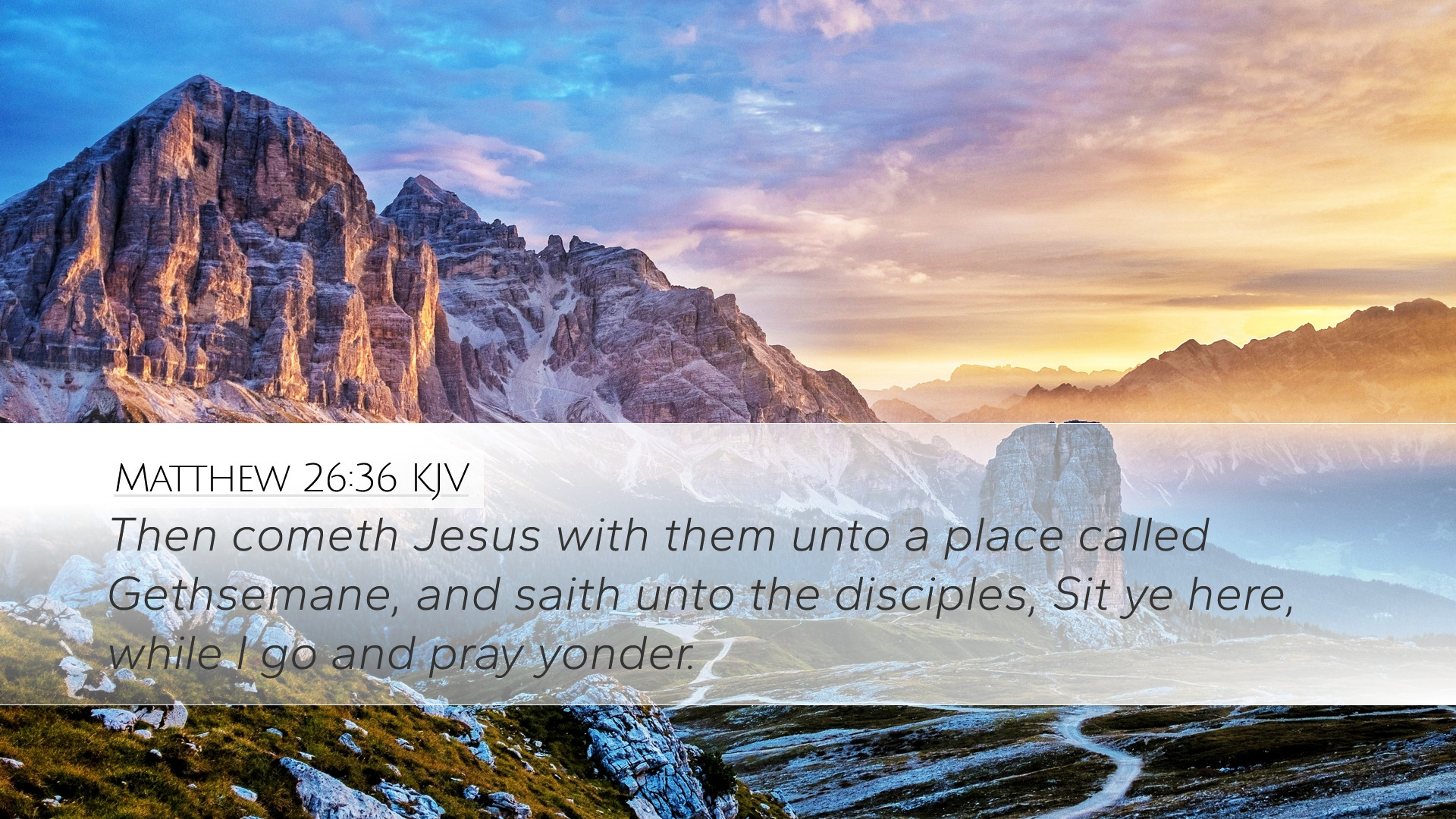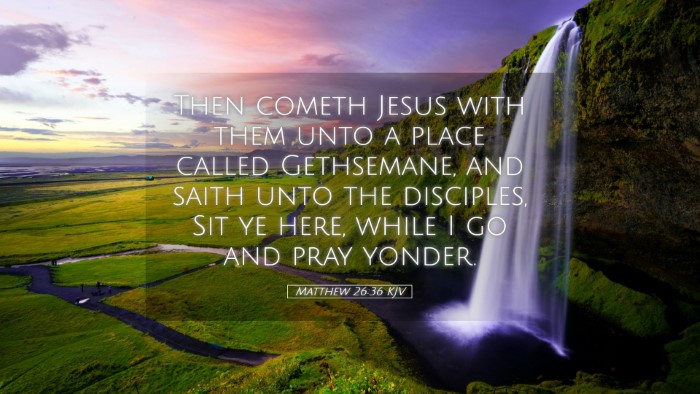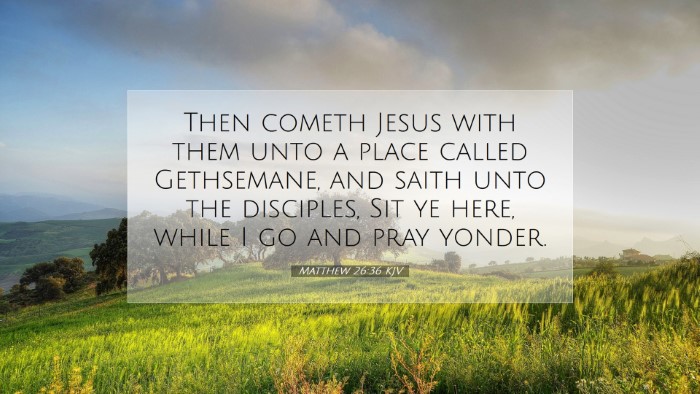Commentary on Matthew 26:36
In Matthew 26:36, we encounter a profound moment in the life of Christ during His final hours before the crucifixion. This passage reads: “Then cometh Jesus with them unto a place called Gethsemane, and saith unto the disciples, Sit ye here, while I go and pray yonder.” This moment sets the stage for understanding the weight of His impending sacrifice and the depths of His humanity.
Contextual Background
The context of this verse is critical. Having celebrated the Last Supper, where He instituted the Eucharist, Jesus now retreats to Gethsemane. This olive garden, located at the foot of the Mount of Olives, serves as a symbolic backdrop—representing peace and the impending turmoil He would face.
The Human Side of Christ
Matthew Henry emphasizes the humanity of Christ in this passage. He notes that, despite being fully divine, Jesus experiences profound emotional turmoil. This duality is crucial for understanding His nature and the weight of sin He is about to bear. Henry points out:
- Human Emotion: Jesus' choice to pray reveals His need for communion with the Father, especially in moments of distress.
- Isolation: By asking His disciples to stay behind, Jesus confronts His suffering alone, illustrating His unique role as the Messiah.
The Call to Prayer
This moment underlines the significance of prayer in times of distress. Adam Clarke notes Jesus' action as an example for His followers, demonstrating the need for prayer in facing trials. Clarke highlights several aspects:
- Preparation: Jesus prepares Himself for the suffering ahead through earnest prayer, indicating that prayer equips believers for their challenges.
- Modeling for Believers: The invitation to pray is extended to all believers, signifying the importance of seeking divine support in times of need.
The Disciples' Role
In this verse, the disciples are instructed to remain watchful, which sets them up for the pivotal moment of spiritual failure that follows. Albert Barnes elaborates on this point:
- Spiritual Vigilance: Barnes argues that the disciples' inability to stay awake and pray exemplifies a lack of vigilance necessary in spiritual life.
- Contrast of States: The contrast between Jesus's fervent prayer and the disciples' sleepiness serves to highlight the critical nature of the moment and the serious attitude required in spiritual engagements.
The Significance of Gethsemane
Gethsemane serves as more than just a geographical location; it symbolizes the dark night of the soul that every believer may face. Henry further notes:
- Place of Choice: The act of choosing Gethsemane reflects Jesus’ deliberate engagement with His fate, emphasizing that suffering is an integral part of the Christian narrative.
- Symbol of Surrender: Gethsemane becomes a symbol of surrender to God's will—a theme central to the Christian faith.
Theological Implications
This verse is laden with theological implications concerning the nature of Christ's sacrifice. By stepping into the role of the suffering servant in Gethsemane, Christ authenticates His mission to redeem humanity:
- Understanding Atonement: The necessity of His suffering emphasizes the debt owed by humanity and the immense grace that flows from His decision to undertake such a burden.
- Divine Purpose: Each plea in prayer is a reflection of Christ’s acceptance of His divine purpose, drawing believers into a deeper understanding of God's redemptive plan.
The Call to Believers
In reflecting on this verse, it is imperative for pastors, students, and theologians to acknowledge the call to engage with their own moments of distress in prayer and reliance on God:
- Embodying Prayerfulness: The challenge lies in embodying the fervor of Christ’s prayer, calling all believers to deepen their prayer life as both a personal and communal practice.
- Awareness of Spiritual Needs: Understanding the disciples’ failure to stay awake serves as a cautionary reminder against spiritual complacency in one’s own life.
Conclusion
Matthew 26:36 is a profound invitation into the heart of Christ’s emotional and spiritual struggle. It showcases the importance of prayer, the need for vigilance, and the weight of Christ's impending sacrifice. As believers reflect on this passage, may they draw encouragement to engage earnestly in prayer, embrace their vulnerabilities, and recognize the depth of God’s love demonstrated in Christ’s surrender in Gethsemane.


